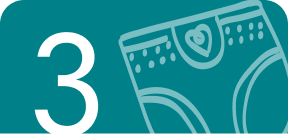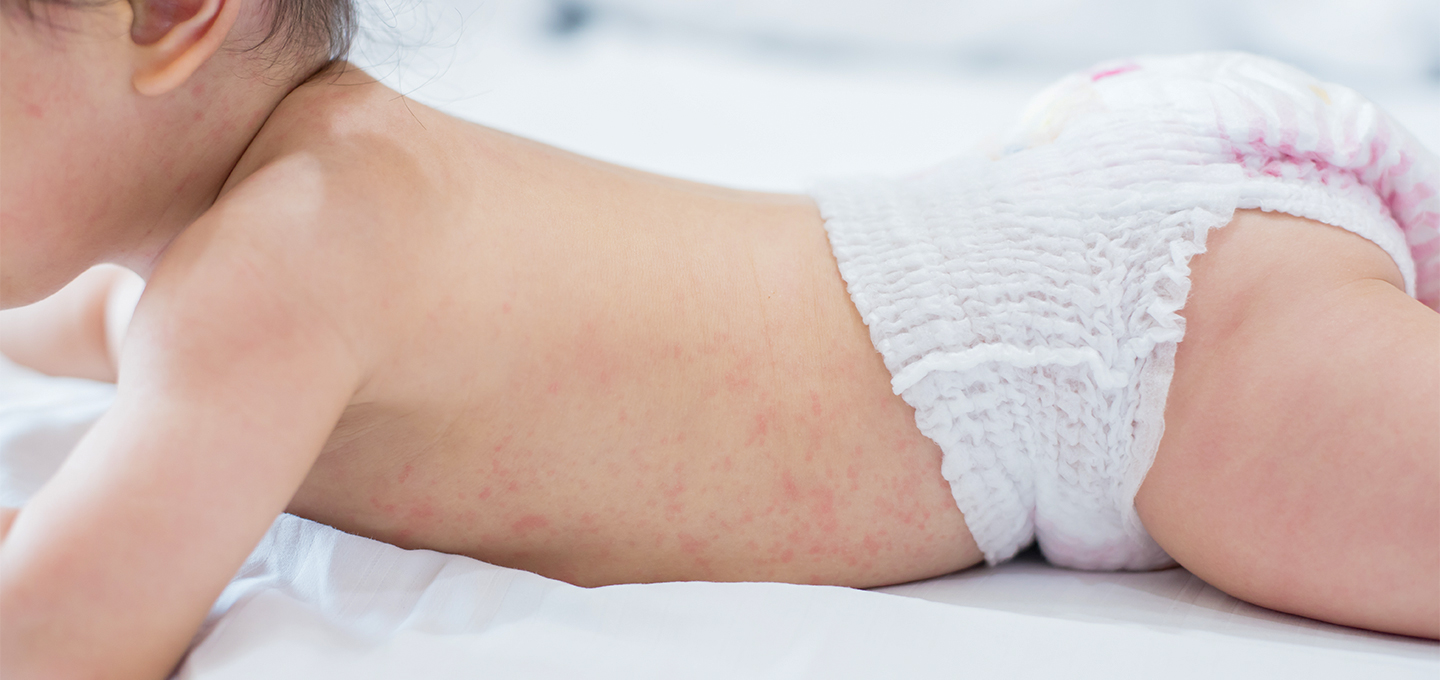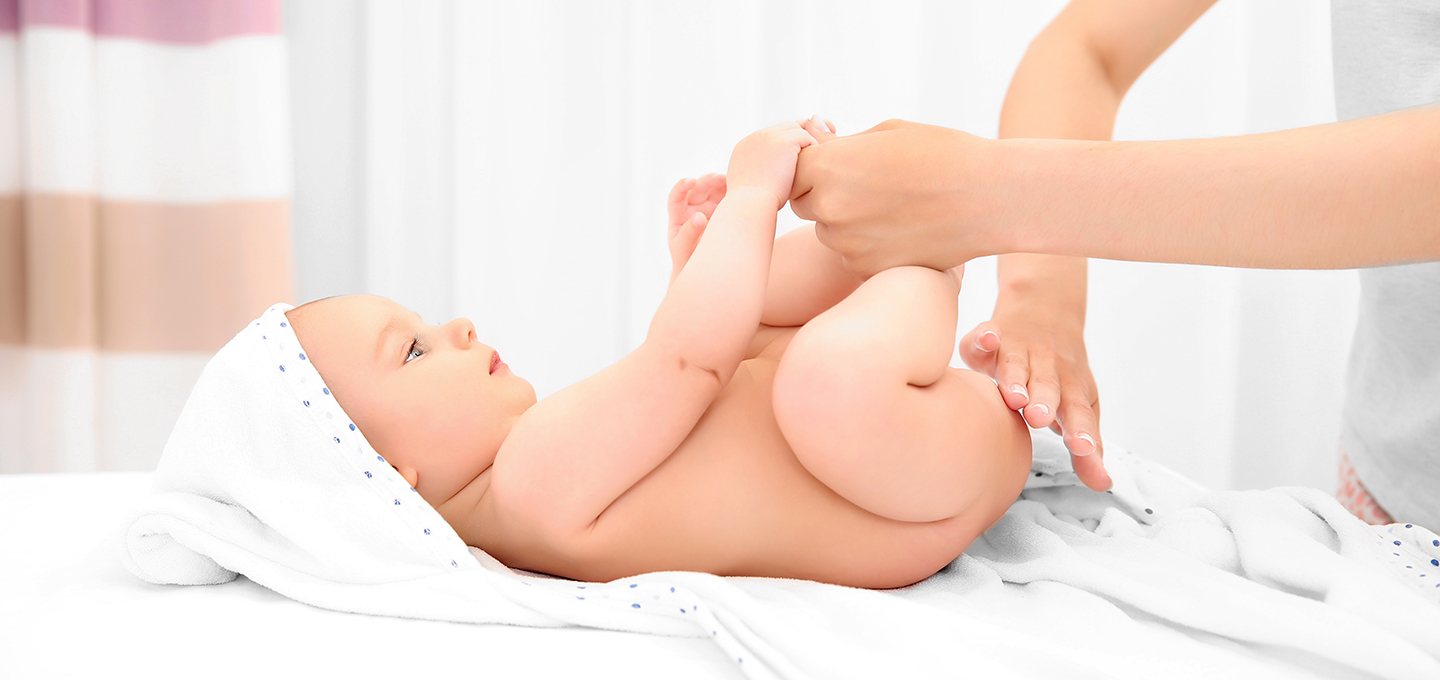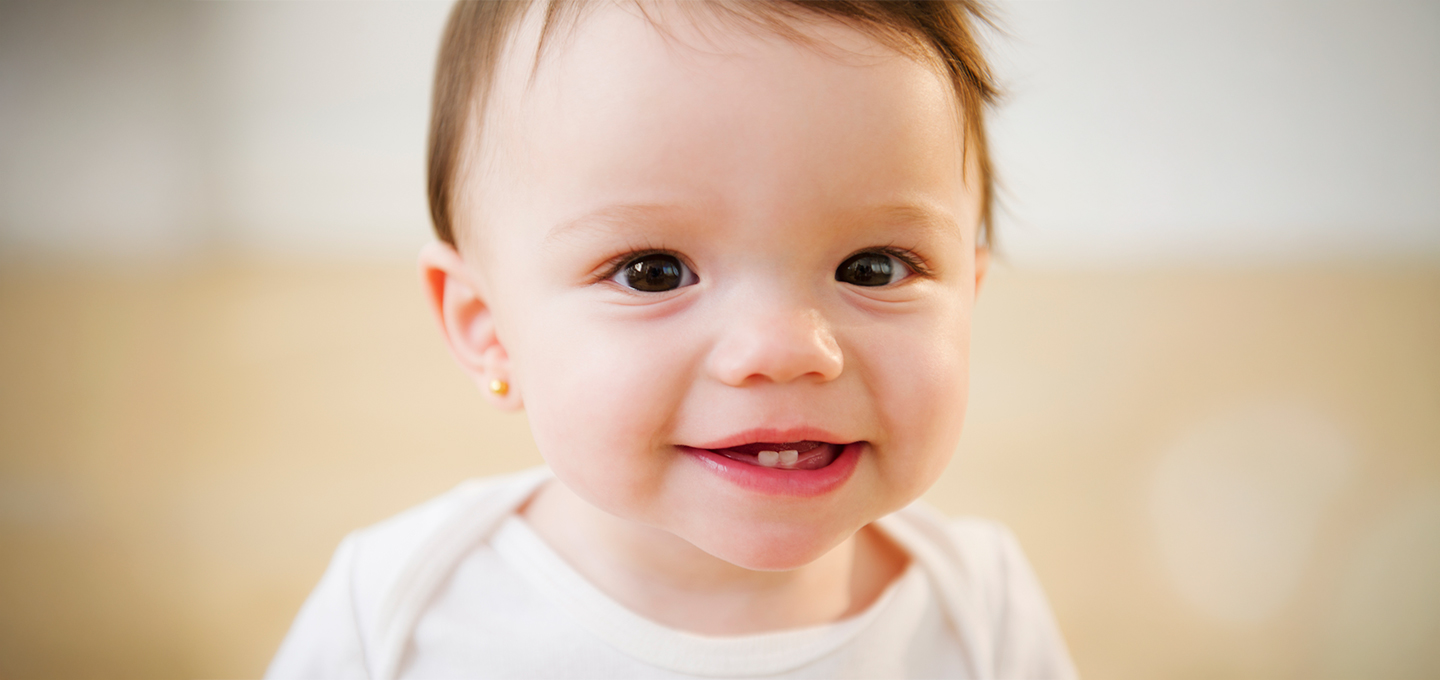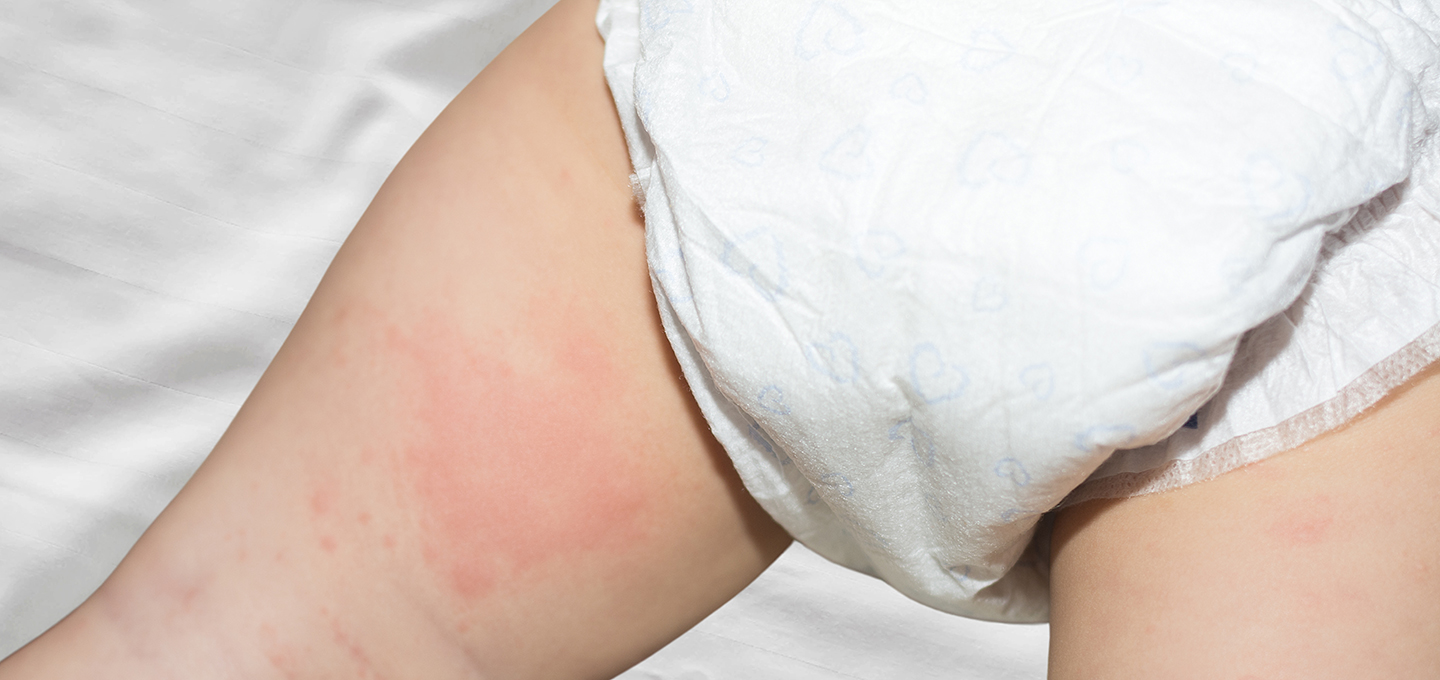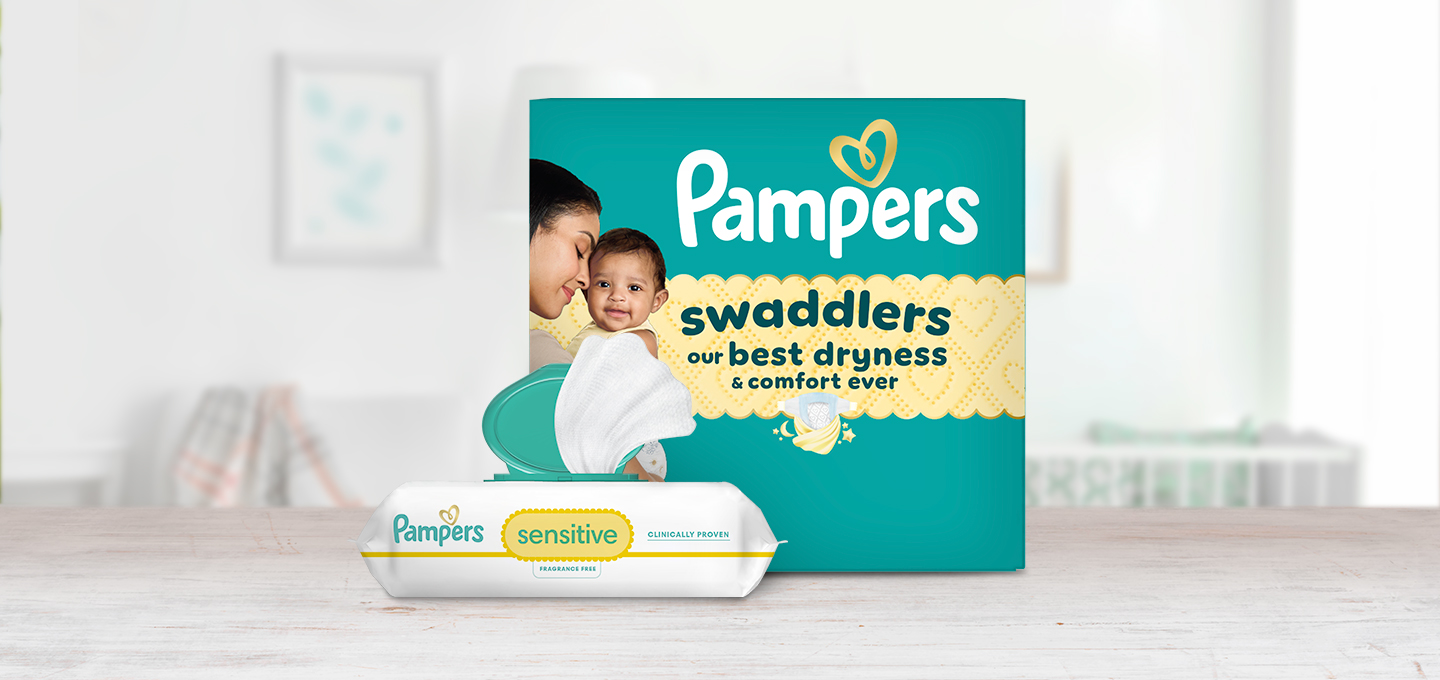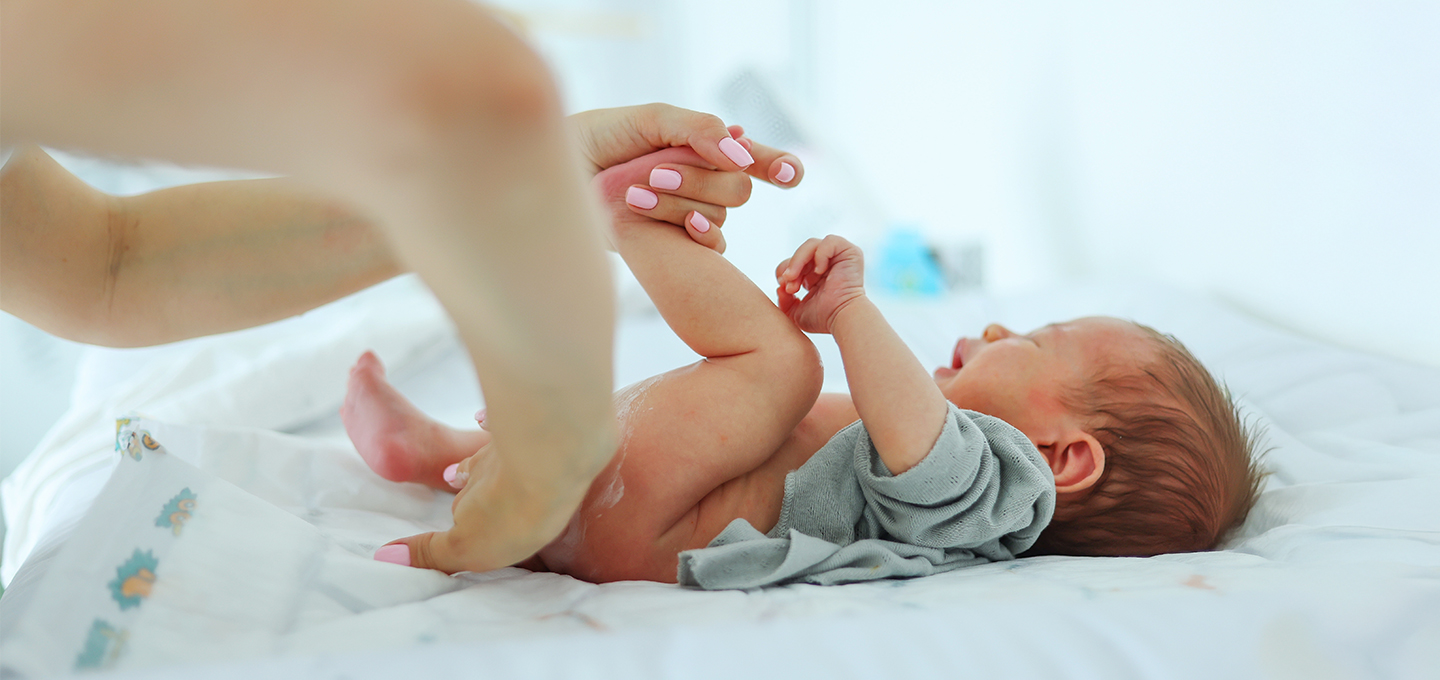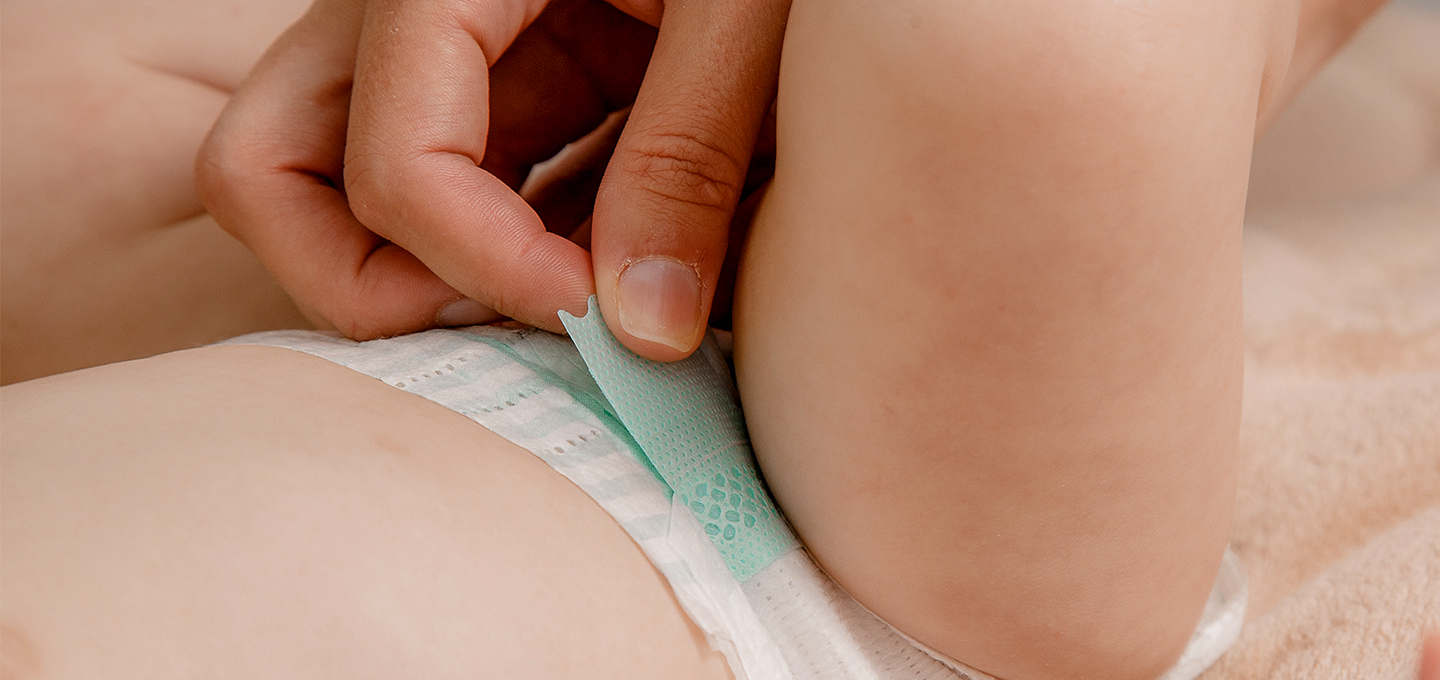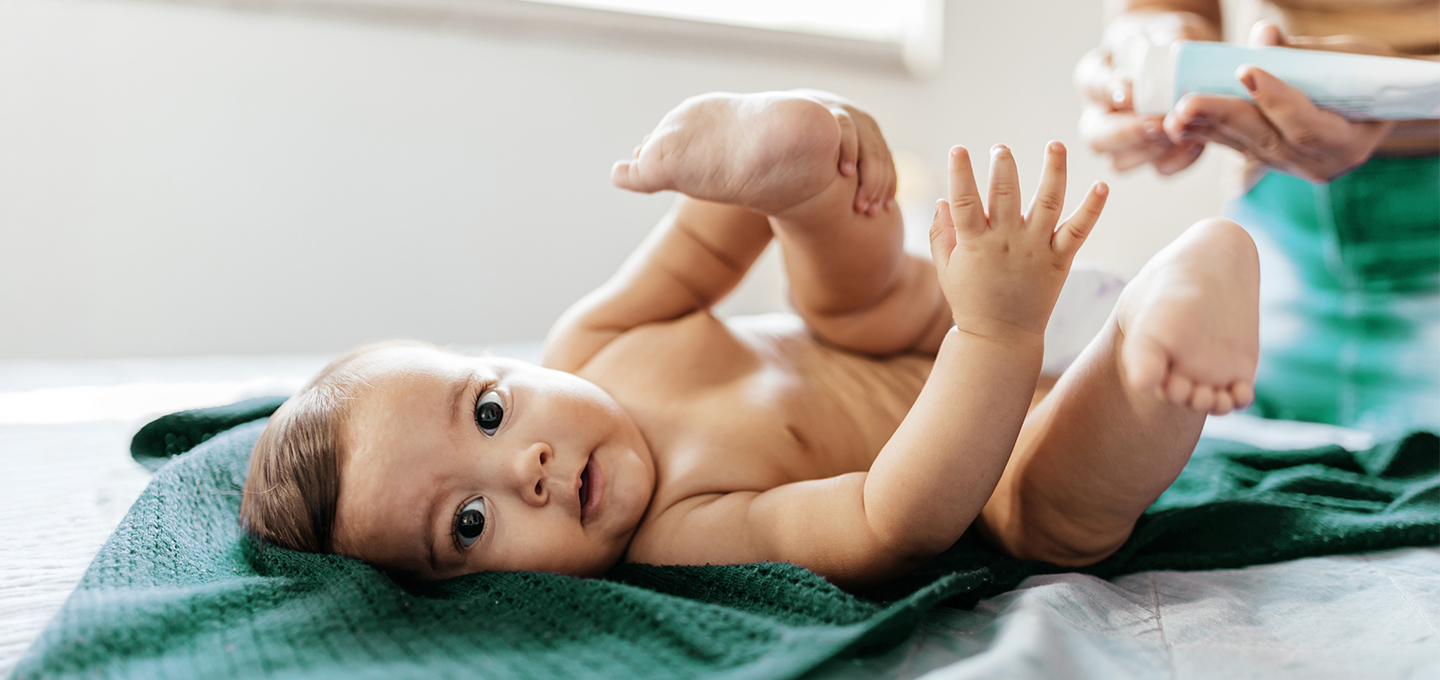
Diaper Rash: Causes, Symptoms, & Relief for Your Baby


In this article
A diaper rash is one of the most common skin irritations in babies and toddlers. It often shows up as red or inflamed patches on the buttocks, thighs, or genitals, and it can look different depending on the cause.
Here’s a quick overview of what you need to know:
Understanding the signs and symptoms of diaper rash and what may be causing it can help you find fast and gentle relief. In the sections below, we’ll guide you through the different types of diaper rash, how to treat each one, and how to help prevent it from coming back.
What Is Diaper Rash?
Diaper rash (or diaper dermatitis) is a common condition that causes irritated skin in your little one’s diaper area. It can look inflamed, flaky, or tender and may make diaper changes uncomfortable for your baby. On lighter skin tones, diaper rash may appear red or pink. On deeper skin tones, it can show up as dark brown, purple, or grayish patches.
It’s usually caused by excessive moisture, friction, or contact with stool or urine. Over half of all babies will develop diaper rash at some point.
Most cases are mild and clear up with simple care and diaper rash treatment.
What Does Diaper Rash Look Like?
Signs and symptoms of diaper rash may vary, depending on the cause and your baby’s skin tone, but they often include:
Symptoms of a Diaper Rash
These are common symptoms of diaper rash, especially in areas that stay moist or rub against the diaper.
If the rash is due to an infection—like yeast or bacteria—you might see:
Other skin conditions, like eczema or cradle cap, may look similar. If you're unsure what you're seeing, check with your baby’s healthcare provider for guidance on how to recognize baby rashes.
What Causes Diaper Rash?
Diapers don’t directly cause diaper rash, but the warm, moist environment they create can contribute to irritation, even with frequent changes.
Common triggers include:
Teething, which can alter stool composition due to increased salivation, is another contributing factor. Other causes of rash in the diaper area may include bacterial, yeast, or viral infections, allergic reactions to new products, and improper diaper fit. Understanding these factors may help reduce the risk of diaper rash and keep your baby comfortable.
Types of Diaper Rash and Treatments
As mentioned in the section above, various causes of rash can lead to different types of rash in the diaper area, including common irritant diaper rash, yeast infection, bacterial infection, or allergic reactions. Here are some types of diaper rash, what they may look like, and the treatment options:
Irritant Diaper Rash
The following skin irritants cause the most common diaper rash:
Yeast (Fungus) Infection
Another common type of diaper rash is a yeast infection, resulting from an overgrowth of fungus located in the digestive tract. If you’re wondering, “Can antibiotics cause diaper rash?” it’s important to note that a yeast infection can sometimes develop after a baby has completed a course of antibiotics, or if a breastfeeding mother has taken antibiotics. Antibiotics can kill both good and bad bacteria, leading to a yeast infection or diarrhea, which irritates the diapered area.
Symptoms and Treatment
Bacterial Infection
Although cases are rare, diaper rash can be caused by a bacterial infection called impetigo, which is typically caused by either Staph or strep bacteria. This can lead to diaper rash or make an existing diaper rash worse.
Symptoms and Treatment
Allergens
Your baby may also be sensitive or allergic to certain substances or ingredients, such as:
Symptoms and Treatment
Other Causes Of Diaper Rash
Some conditions that look like diaper rash may have different underlying causes. For example, seborrheic dermatitis can affect the diaper area when the skin produces too much oil. Rarely, a genetic condition like acrodermatitis enteropathica—linked to zinc deficiency—may be the cause.
If your baby’s rash isn’t improving or seems unusual, it’s a good idea to consult your baby’s healthcare provider. They can help determine the cause and guide you toward the right diaper rash treatment.
How Long Does Diaper Rash Last?
The length of time it takes for diaper rash to go away depends on its severity. Mild diaper rash typically goes away after about 3 to 4 days with home treatment. However, some more severe diaper rashes may take longer or require treatment, such as antibiotics or antifungal creams. Your baby’s healthcare provider will be able to identify the severity of the diaper rash and the best course of action.
How to Prevent Diaper Rash?
Here are some ways to help prevent diaper rash:
Diaper Rash Treatment and Relief
Most cases of diaper rash are mild and typically clear up with consistent home care. The key is to reduce irritation, protect the skin, and keep the diaper area as dry and clean as possible.
Treatments for diaper rash pain relief often include:
These steps can provide effective relief from diaper rash pain and help prevent flare-ups. If the rash doesn’t improve within a few days or looks severe, check with your baby’s healthcare provider. They can guide you toward the best relief for a diaper rash or suggest targeted care if an infection or underlying issue is involved.
Home Remedies for Diaper Rash
You can pair general care with these gentle home remedies for a diaper rash, all of which may help soothe and support healing:
These remedies focus on comfort and support, but remember, if a rash worsens or doesn’t improve in a few days, it’s important to check in with your baby’s healthcare provider for tailored diaper rash treatment recommendations.
When to Contact Your Healthcare Provider
Mild Diaper rash generally goes away after a few days with home treatment and by following our prevention measures listed above. However, call your little one’s healthcare provider if you notice the following:
FAQS AT A GLANCE
Cornstarch isn’t recommended for diaper rash. It may trap moisture and worsen fungal rashes. Always check with your baby’s healthcare provider before trying powders or home remedies.
The Bottom Line
Remember that a diaper rash is not caused by the diaper itself but is often linked to four main factors: overhydration, friction, imbalanced skin pH, and prolonged contact with stool. With help from your child’s healthcare provider, you can receive an expert diagnosis and treatment for managing symptoms.
Consider trying our Pampers® Swaddlers and Pampers® Sensitive™ Wipes together as a diapering regimen. These two powerhouse products are scientifically demonstrated to work together to balance pH levels, improving overall skin health and providing the ultimate comfort for your baby. Download our Pampers Rewards App to save on your Pampers Diapers and Wipes purchases.
- American Academy of Pediatrics. Caring for Your Baby and Young Child: Birth to Age 5, 7th ed. (New York: Bantam Books, 2019).
- Cleveland Clinic. “Diaper Rash (Diaper Dermatitis).”
- Healthy Children. “Changing Diapers.”
- Healthy Children. “Common Diaper Rashes & Treatments.”
- Kids Health. “Diapering Your Baby.”
- Mayo Clinic. "Baby Rashes."
- Mayo Clinic. "Diagnosis Treatment."
- Mayo Clinic. “Diaper Rash.”
- Mayo Clinic. "Hand-foot-and-mouth disease."
Read more about Baby
Related Articles
Join a World of Support
through Pregnancy and Parenthood.
TRACK WITH TOOLS
LEARN WITH EXPERTS
GET REWARDED


